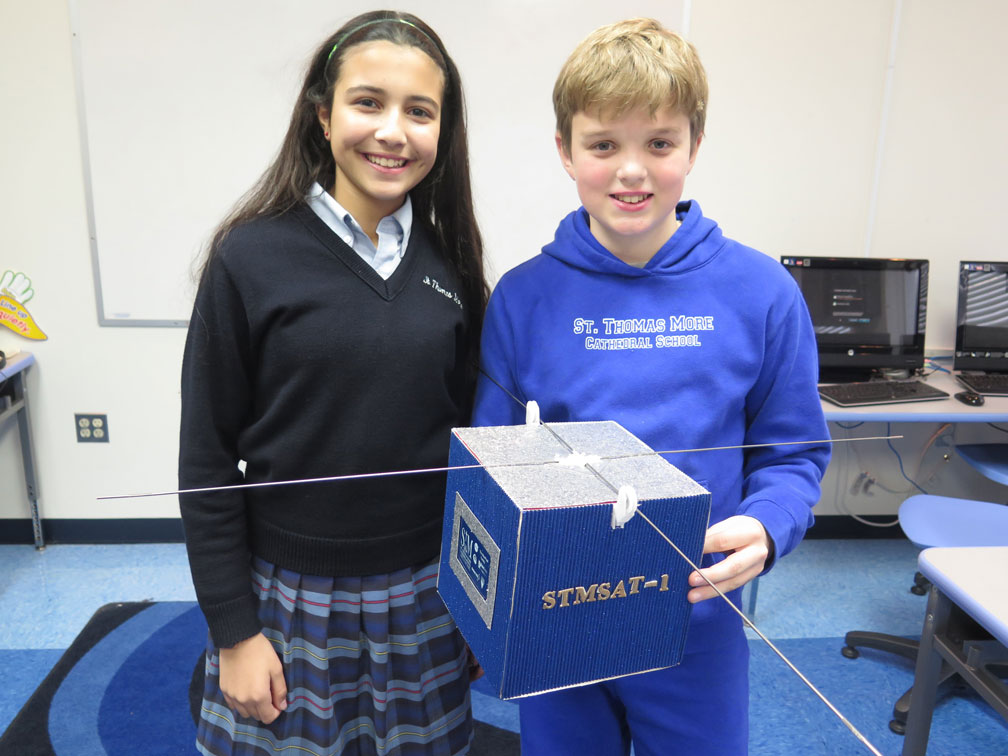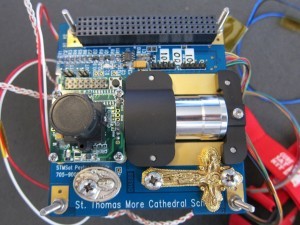This post was contributed by Sadie Dingfelder.

Rebecca El Choueiry and Gabriel MacPhail pose with a model of their satellite. (Sadie Dingfelder/Express)
St. Thomas More Cathedral School in Arlington is poised to become the first grade school to send a satellite into orbit, according to NASA. The pre-kindergarten through eighth-grade students built the shoebox-sized satellite using a kit called CubeSat. It was launched on a rocket from the Kennedy Space Center in Florida to the International Space Station (ISS) in December.
The satellite is set to be released from the ISS on Feb. 15 and will begin beaming photos from 200 miles above the Earth’s surface to a radio antenna on the school’s library. Students will share the photos online.
That is, if everything goes as planned.
“There’s a lot that could go wrong,” said future NASA communications specialist Gabriel MacPhail, 11. “The antenna might not work. The camera might be pointed in the wrong direction.”
MacPhail knows this firsthand, having worked on a particularly knotty problem: how to get the lens cap off of the satellite’s camera once it’s deployed. He and his fellow students considered many options, including blowing the lens cap off with compressed air or using a doorlike hinge.
“Eventually, I said, ‘Wait! Why don’t we just ask the astronauts to take off the lens cap before they kick it out of the ISS,’ ” he recalled.
It’s the simplest ideas that often work best, added future rocket scientist Rebecca El Choueiry, 13.
In addition to the camera, the satellite contains a plaque engraved with all 400 of the students’ and teachers’ signatures and a golden cross medallion that was blessed by Pope Francis.
A gold cross, blessed by Pope Francis, is among the satellite’s payload. (St. Thomas More Cathedral School) A gold cross, blessed by Pope Francis, is among the satellite’s payload. (St. Thomas More Cathedral School)

A gold cross, blessed by Pope Francis, is among the satellite’s payload. (St. Thomas More Cathedral School)
MacPhail is particularly excited about the satellite’s religious payload.
“If something does go wrong and the satellite drifts out of low Earth orbit, maybe alien life will pick it up,” MacPhail said. “I’m just saying, anything is possible in space exploration.”